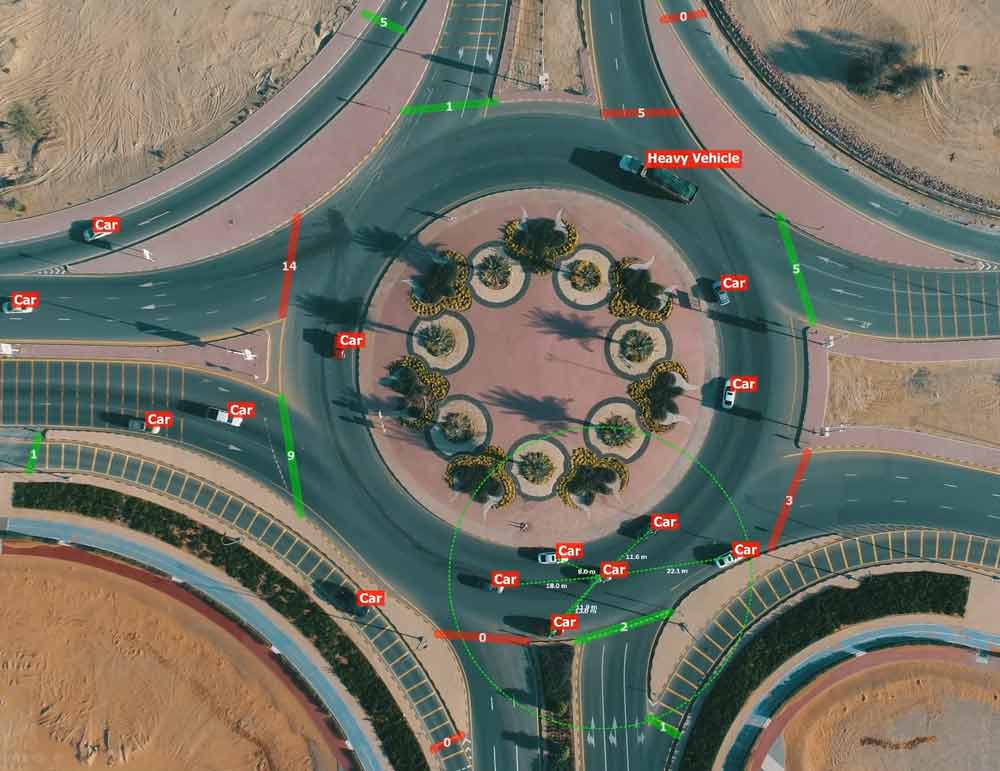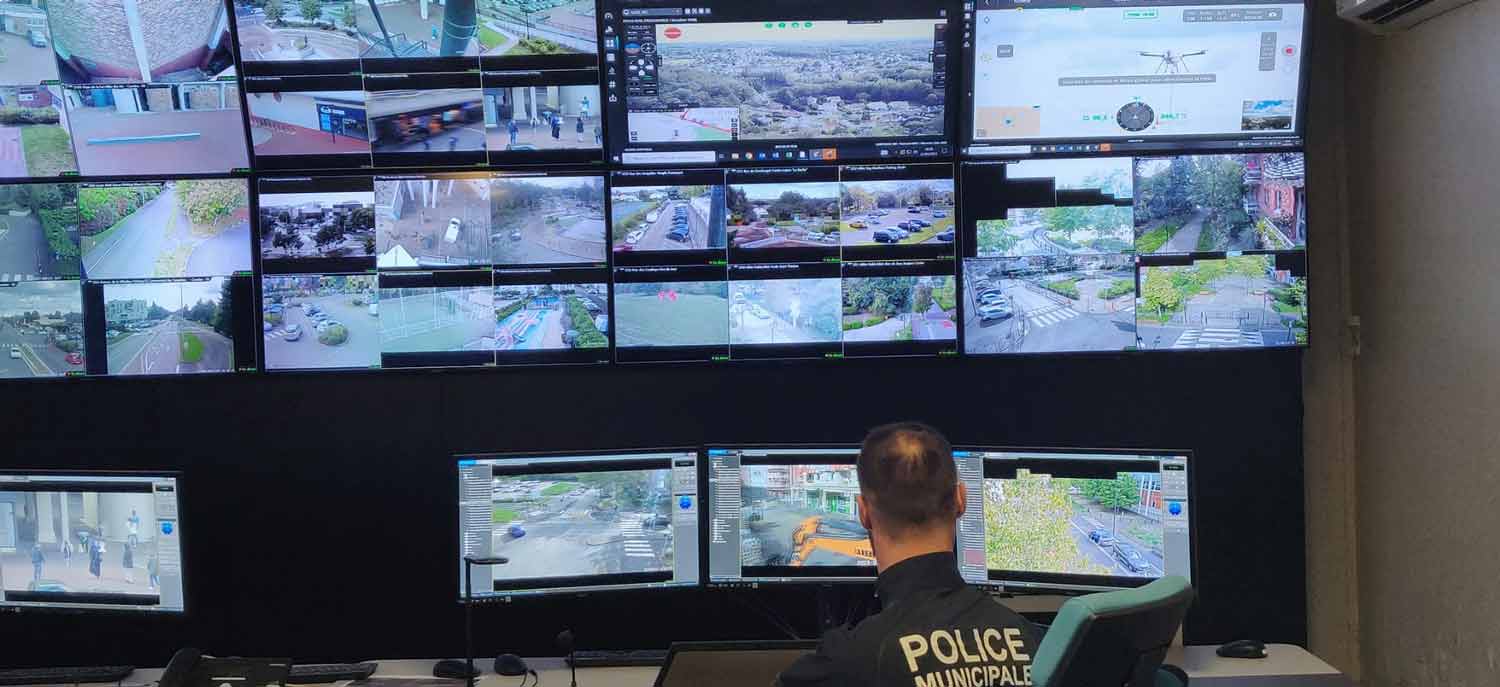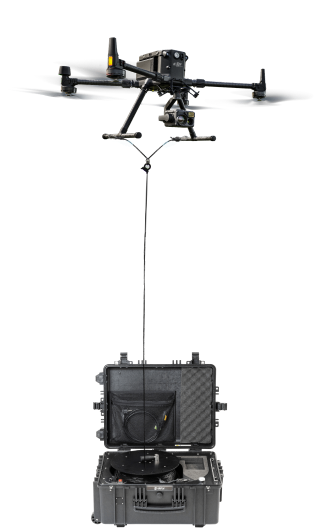Police Drones: Applications and Advantages in the Field
These high-tech devices are equipped with advanced features such as thermal imaging cameras, infrared sensors, and surveillance capabilities that make them invaluable tools in various law enforcement scenarios.
Their rapid deployment, cost-effectiveness, and ability to provide real-time aerial views modernize the way police departments operate, ensuring that officers can respond swiftly and effectively to emergencies and incidents.
How Police Drones are Used to Enhance Public Safety
Emergency Response
Police drones play a crucial role in emergency response situations to ensure public safety. During natural disasters or large-scale accidents, drones can quickly survey the affected areas, providing first responders with critical information about the extent of the damage and the locations of people in need of rescue.
For instance, a thermal camera usually used by firefighters can detect heat signals, helping to locate individuals trapped under rubble or in hard-to-reach places. This rapid assessment capability significantly enhances the efficiency and effectiveness of emergency response teams.
Crowd Monitoring and Event Security
Large public gatherings, such as concerts, sporting events, and protests, pose significant event security challenges. Law enforcement can deploy police drones to monitor crowds, giving them a bird’s-eye view of the event. This allows for real-time monitoring of potential threats, enabling quick intervention to prevent incidents such as stampedes, fights, or other disturbances.
Drones equipped with advanced surveillance systems can also help identify and track suspects or suspicious activities, ensuring the safety of all attendees.
Traffic Management
Managing traffic flow and ensuring road safety are essential tasks for police departments. Drones can optimize the traffic monitoring, identify congestion points, and detect accidents. Police officers can use this real-time data to optimize traffic light timings, redirect traffic to alternate routes, and dispatch emergency services promptly to accident scenes.
Additionally, during major events or emergencies, surveillance drones can provide aerial footage to help coordinate and manage traffic diversions more effectively. Tethered drones can fly for a long time, monitor traffic constantly, and stay in place during events or incidents.

Search Operations
Search and rescue operations benefit immensely from the deployment of police drones. Whether searching for missing persons in urban areas, forests, or mountains, drones can cover large areas quickly and efficiently.
Equipped with thermal imaging cameras and infrared sensors, drones can operate day and night, significantly increasing the chances of finding missing individuals. This capability is particularly valuable in situations where time is of the essence, such as locating lost hikers or searching for individuals in perilous conditions.
Crime Scene and Incident Investigation
Drones provide an unparalleled advantage in crime scene and incident investigations. They can capture high-resolution images and videos from various angles, creating comprehensive and detailed records of the scene. Investigators can identify evidence that ground level observers might be missed from ground level thanks to this aerial perspective.
Drones are used in traffic accident investigations to accurately document the scene and reconstruct the events that led to the accident. Additionally, they can monitor ongoing incidents, providing real-time footage to command centers and aiding in decision-making processes.
Benefits of Police Drones in Law Enforcement
Advanced Surveillance and Monitoring
One of the primary benefits of police drones is their advanced surveillance and monitoring capabilities. Equipped with infrared cameras, these surveillance systems can detect heat signatures, making them effective tools for night-time operations and in conditions where visibility is poor. These features help track suspects, monitor high-crime areas, and conduct secret surveillance operations without endangering the safety of police officers.
Supporting Law Enforcement Operations
Police drones significantly enhance the safety of law enforcement officers by providing real-time situational awareness. This allows officers to assess potential threats from a safe distance before engaging.
Law enforcement drones are used to monitor dangerous situations such as hostage situations or armed standoffs. They provide important information for planning and carrying out operations. Additionally, the presence of drones can act as a deterrent, contributing to de-escalation in potentially volatile situations and reducing the likelihood of violence.
Cost-Effective Solution and Rapid Deployment
The use of drones offers a cost-effective solution for many law enforcement tasks. Traditional methods of aerial surveillance, such as helicopters, are expensive and resource-intensive. Drones, on the other hand, are relatively inexpensive to purchase and operate.
Their rapid deployment capability allows them to quickly mobilize to respond to incidents, providing immediate aerial support. This is particularly beneficial in rural or remote areas where traditional aerial support might not be readily available.
Real World Examples of Police Drones Used by Police Officers
Los Angeles Police Department (LAPD), United States
The LAPD use drones into their daily operations for surveillance and monitoring high-crime areas. In a notable operation in 2020, drones helped reduce a major drug trafficking operation by providing continuous aerial surveillance, leading to the arrest of 23 suspects and the seizure of $3 million worth of narcotics.
Miami Police Department, United States
Miami Police Department employs drones to assist in crime scene investigations and traffic accident reconstruction. In 2021, drones helped investigate over 200 traffic accidents by providing aerial footage. This footage helped determine accident causes faster. The use of drones has also reduced the time required to clear accident scenes by 40%.
Dallas Police Department, United States
The Dallas Police Department uses drones to monitor crowds at large events like the annual State Fair of Texas. In 2022, drones helped manage crowds exceeding 2.5 million attendees, ensuring public safety by identifying and responding to potential threats in real-time.
West Midlands Police, United Kingdom
The West Midlands Police in the UK utilize drones for various operations, including surveillance and crowd control. During the Birmingham Commonwealth Games in 2022, drones were deployed to monitor crowds and ensure public safety. These drones provided live aerial footage to command centers, helping to manage over 1.5 million attendees.
Dubai Police, United Arab Emirates
Dubai Police use drones for traffic management, monitoring major roads, and identifying congestion points in real-time. In 2022, drones were instrumental during the Dubai Expo, where they helped manage traffic for over 24 million visitors. The drones’ live data feeds allowed for efficient traffic rerouting and rapid response to accidents, ensuring smooth traffic flow throughout the event.
Toronto Police Service, Canada
The Toronto Police Service employs drones for various law enforcement activities, such as surveillance, crime scene documentation, and search operations. In a high-profile operation in 2021, drones helped track and apprehend a suspect involved in a series of burglaries. The drones’ high-resolution cameras provided real-time footage that guided officers on the ground, leading to the suspect’s arrest without incident.
Conclusion about Police Drones
Police drones are modernizing law enforcement by offering enhanced surveillance, improved public safety, and increased operational efficiency. Tethered drones represent a significant advancement with their extended flight time, providing a continuous aerial view, crucial for monitoring large events, conducting search and rescue missions, and maintaining surveillance over large areas.
As drone technology continues to evolve, we can expect even greater integration and reliance on these high-tech devices to ensure the safety and security of our communities.
Police Drones FAQ
What are the primary uses of police drones?
Police drones serve a wide range of purposes, including surveillance, emergency response, crowd monitoring, traffic management, search operations, and crime scene investigations. They provide real-time aerial views, allowing officers to assess situations from above, which is especially valuable in complex or large-scale incidents. Drones equipped with thermal imaging cameras and infrared sensors enhance night-time operations and and night vision in challenging conditions. Additionally, the rapid deployment of drones enable law enforcement to respond quickly and effectively to various situations, making them an invaluable tool in modern policing.
How do drones enhance public safety during emergencies?
Drones enhance public safety during emergencies by providing critical real-time information to first responders. During natural disasters, drones can survey affected areas, helping to locate trapped individuals and assess damage. This information speeds up rescue operations and resource allocation. In scenarios like active shooter situations or large fires, drones offer a safe way to monitor and evaluate threats without putting first responders at risk. Overall, drones improve situational awareness, coordination, and response times, ultimately saving lives and resources.
What features make drones suitable for law enforcement?
Drones are equipped with several features that make them highly suitable for law enforcement. Thermal cameras and infrared sensors allow for effective night-time and low-visibility operations, while high-resolution cameras provide detailed aerial views. The rapid deployment capability of drones ensures quick response times. Tethered drones offer extended flight times and secure data communication, enhancing surveillance and monitoring operations.
Are police drones cost-effective?
Yes, police drones are a cost-effective solution for many law enforcement tasks. Compared to traditional aerial surveillance methods like helicopters, drones are significantly cheaper to purchase, operate, and maintain. The efficiency and effectiveness of drones in performing various tasks can result in substantial savings in both time and resources.
How do drones improve officer safety?
Drones improve officer safety by providing real-time situational awareness from a safe distance. They can be deployed to assess potentially dangerous situations, such as active shooter incidents, hazardous material spills, or natural disasters, without putting officers in harm’s way. Drones equipped with thermal imaging and high-resolution cameras offer detailed views of the scene, helping officers make informed decisions. By enhancing operational awareness and reducing exposure to danger, drones significantly contribute to the overall safety of law enforcement personnel.
What are the advantages of tethered drones?
Tethered drones offer several advantages over traditional battery-powered drones. Their most significant benefit is the extended flight time, as they can remain airborne for up to 50 hours because of a wired power supply. This endurance is crucial for prolonged surveillance and monitoring tasks.
Tethered drones are very secure because the physical tether keeps them from flying away and maintains a strong and secure communication link. This security is vital for sensitive operations where data integrity is paramount. Additionally, tethered drones are cost-effective, reducing the need for multiple drones or frequent battery changes, thus maximizing operational efficiency and reliability.






